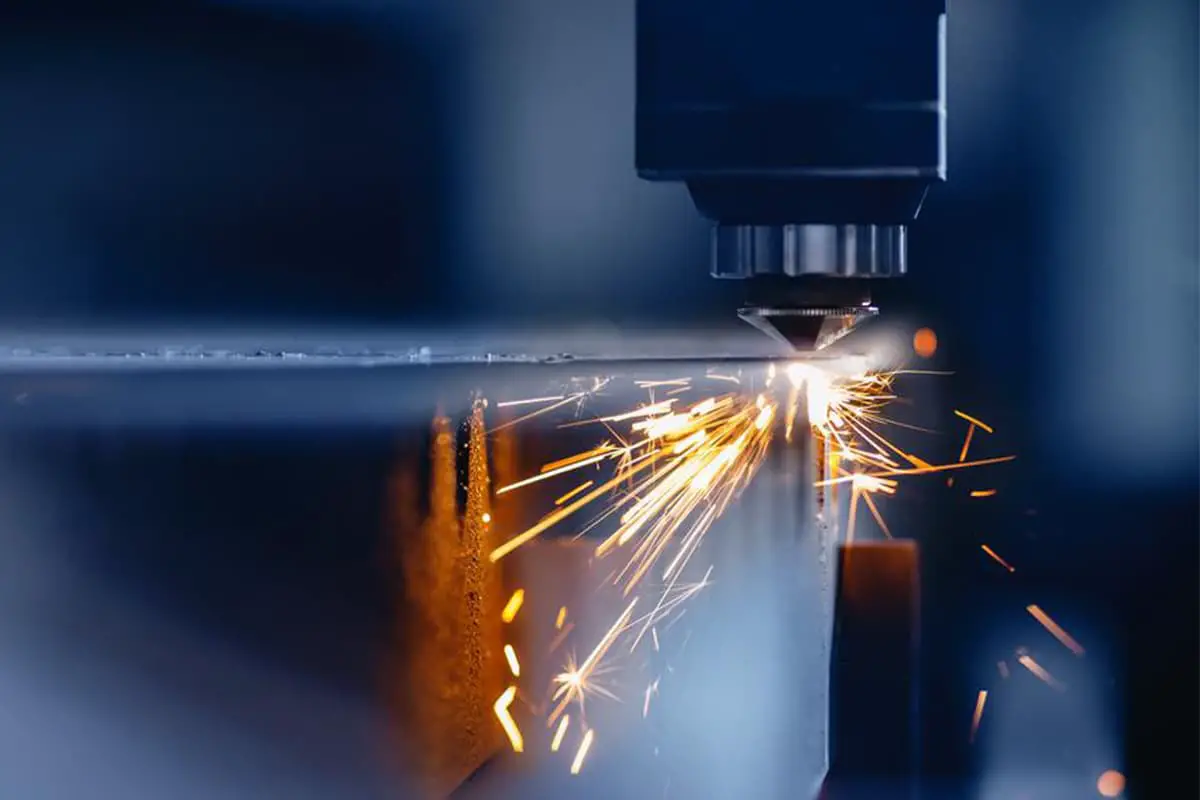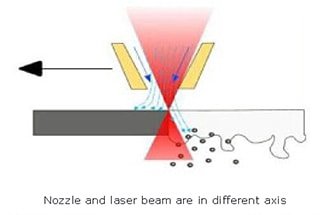
Imagine cutting through thick metal with a laser, only to be surrounded by harmful smoke and dust. This is the reality in laser cutting industries today. Our article explores advanced dust removal and smoke exhaust systems that tackle this issue, ensuring a safer environment and compliance with regulations. By reading on, you’ll discover innovative solutions to improve air quality and maintain efficient operations in high-power laser cutting machines.

In recent years, the laser cutting industry has developed rapidly, and the power of various lasers has become larger and larger.
With the continuous improvement of laser cutting thickness and speed, the amount of smoke and dust generated per unit time is increasing.
If the original dust removal system of the laser cutting machine is still used, it will not be able to meet the normal dust removal needs and cannot meet the corresponding regulations of the government and the industry.
In order to improve product quality and meet customer needs, this paper focuses on the research and optimization of the dust removal system for laser cutting machines of 6kW and above.

The smoke and dust released during laser cutting of metal sheets can be roughly divided into dust and aerosols, of which 97% have a diameter of less than 5.7 μm, which means that most of the smoke and dust can be inhaled by human body.
Depending on the cutting material and scene, other harmful substances may also be produced.
For example, if the surface of the sheet has oil, it will produce very complex hydrocarbon compound gases; if the sheet surface has a film, the cutting will release lipid and olefinic compounds, accompanied by a noticeable odor.
If the smoke and dust produced during laser cutting are not effectively captured and treated, it will harm human health and damage the environment.
During laser cutting of metal sheets, a negative pressure is formed below the cutting surface by air extraction through a fan, and the smoke and dust produced by cutting are sucked out.
Currently, the industry generally uses a multi-partition method. The effective cutting area is divided into multiple zones, and the corresponding damper is opened according to the actual cutting position to achieve a better dust removal effect. This is shown in Figure 1.

According to the formula, the required air volume for the dust collector is:
Lp=K×3600(5H2+Fx)Vx (m3/h) (1)
Where K is the selection margin coefficient, which is ≥1.2; H is the distance between the actual suction port and the cutting position, in meters; Fx is the dust hopper partition area, in square meters; Vx is the cutting position wind speed, in meters per second.
From Equation (1), it can be seen that for laser cutting machines equipped with dust collectors of the same air volume, the smaller the hopper partition area and the closer the suction port is to the cutting distance, the higher the dust removal wind speed on the worktable surface, and the better the dust removal effect.
Through various experiments on different sheet metal and cutting parameters, the optimal cutting board surface dust removal wind speed is between 0.8~1.2m/s. In this case, the dust removal effect is good, and the success rate of capturing smoke and dust is over 95%. There is no obvious smoking seen with naked eyes or lungs. If the cutting board surface dust removal wind speed is lower than 0.5m/s, the dust removal effect is poor, and there will be obvious smoking when cutting carbon steel plates. If the cutting board surface dust removal wind speed is higher than 1.2m/s, the dust removal effect is good, but it will also suck in more sparks or slag, causing damage to the dust removal equipment, or even causing fires.
From the above formula, it is obvious that one way to increase the dust removal wind speed at the cutting position without increasing the power of the dust collector is to reduce the partition area of the dust hopper.
From this perspective, we conducted practical comparative tests and experiments. We changed the machine with the same cutting scope from 5 partitions to 6 partitions. After improvement, the section length remained unchanged at 2.07m, while the section width was reduced from 0.85m to 0.69m, reducing the partition area by 19%, as shown in Figure 2.

According to the test, under the same conditions of air volume, temperature, and measurement position, the average wind speed of the worktable surface before improvement was 0.63m/s, and after improvement, the average wind speed increased to 0.75m/s, which is an increase of about 19%.
Therefore, reducing the partition area can directly increase the wind speed Vx when the air volume Lp remains the same.
However, increasing the dust removal partition will also bring some disadvantages, such as an increase in the number of air gates, which will cause more air leaks; an increase in the number of cylinders used to control the air gates may increase the cost and the possibility of failures.
Therefore, it is necessary to make choices based on the product’s actual positioning.
From the above formula, it is obvious that the second way to increase the dust removal wind speed at the cutting position without increasing the power of the dust collector is to reduce the distance between the suction port and the cutting surface.
Regarding laser cutting machines, increasing the height of the air duct means shortening the distance between the air gate suction port and the worktable.
We also conducted comparative test experiments under the same conditions of dust removal partition and dust removal fan. The corresponding actual average speed test data for three times of air duct height increase is shown in Table 1.
As can be seen from the table, when the H value decreases proportionally, the Vx increases continuously. However, due to the structural limitations of the laser cutting machine, there are limitations to reducing the H value.
In addition, as the air duct height keeps increasing, a protective scheme to prevent the laser from damaging the air duct needs to be considered. The air duct should be arranged outside the cutting area, especially for high-power machines.
Table 1 – Wind speed test data record
| Foundations | Option 1 | Option 2 | Option 3 | |
| Working table surface actual average wind speed Vx (m/s-1) | 0.52 | 0.63 | 0.74 | 0.84 |
| Distance from worktable surface to suction port H /m | 0.60 | 0.50 | 0.40 | 0.30 |
| Test fan air volume Lp (m3/h-3) | 6000 | 6000 | 6000 | 6000 |
According to the Moody chart, the damping coefficient λ along the way can be determined by the Reynolds number Re and the ratio ε/d (where ε is the absolute roughness of the air duct wall, and d is the equivalent diameter of the pipe).
The larger the λ, the greater the pressure loss along the way.
Combining with the actual flow of air in the air duct, it can be seen that the larger the equivalent diameter d of the air duct, the smaller the λ, and the smaller the surface area s (with a constant length and sectional circumference c), the smaller the friction loss.
Therefore, in terms of reducing the pressure loss along the way, round pipes should be preferred first, followed by square pipes, and then rectangular pipes.
As shown in Table 2, under the same cross-sectional area, the equivalent diameter of the round pipe is the largest, and the surface area inside the pipe is the smallest.
Table 2 Equivalent diameter and sectional circumference of round pipe, square pipe, and rectangular pipe.
| Pipelines | Circular pipe (Φ,114) | Square tube (100×100) | Rectangular tube (150×67) |
| Equivalent diameter d | 114 | 100 | 92 |
| Sectional circumference c | 354 | 400 | 434 |
Due to restrictions in the structure of laser cutting machines, it is difficult to use circular pipes for air duct structures.
Generally, square tubes and rectangular tubes are used for the main air duct. For example, a rectangular tube with the size of 250×150 and a square tube with the size of 200×200 are used.
The equivalent diameter of the rectangular tube is 0.19m and that of the square tube is 0.2m. Tests have shown that at a constant air volume of 5000m3/h and the length of the air duct, the unit pressure loss of the rectangular tube is 34.86Pa/m and that of the square tube is 26.93Pa/m, with a reduction of 23%.
The recommended range for wind speed inside the laser cutting machine air duct is 15-18m/s.
According to the formula V=Q/S, whether the air duct section selection is reasonable or not could be checked according to the dust collector’s air volume and the recommended wind speed inside the duct.
If the wind speed inside the duct is too low, smoke and dust inside the duct are likely to accumulate; on the other hand, if the wind speed inside the duct is too high, the system pressure loss will increase and the dust removal efficiency will decrease.
Therefore, when selecting a dust collector, not only should a dust collector that corresponds to the air volume be chosen, but also the pressure loss of the laser cutting machine’s dust removal system should be considered. The inlet wind pressure of the dust collector must not be less than the pressure loss of the laser cutting machine’s dust removal system.
It is necessary to select the corresponding performance curve of the manufacturer’s provided fan (see Figure 3) for selection, and not make generalizations based on fan power alone.

(1) The speed of updating the dust removal system of domestic laser cutting machines is far behind the development speed of laser power. Dust removal problems will be exposed in high-power machines.
(2) The dust removal effect of laser cutting machines is also related to factors such as hopper seals, and the number of bends in the air ducts. Therefore, even with the same structured dust removal system, the dust removal effect of products produced by different laser cutting machine manufacturers may vary greatly.
(3) The amount of smoke and dust generated by laser cutting may be an issue that has been ignored. The amount of smoke and dust emitted by laser cutting depends on the material characteristics of the metal itself, as well as the parameters of the cutting speed and cutting pressure during processing. Setting the cutting parameters that minimize smoke and dust emissions for different materials is also an important way to improve the dust removal effect of laser cutting machines.








